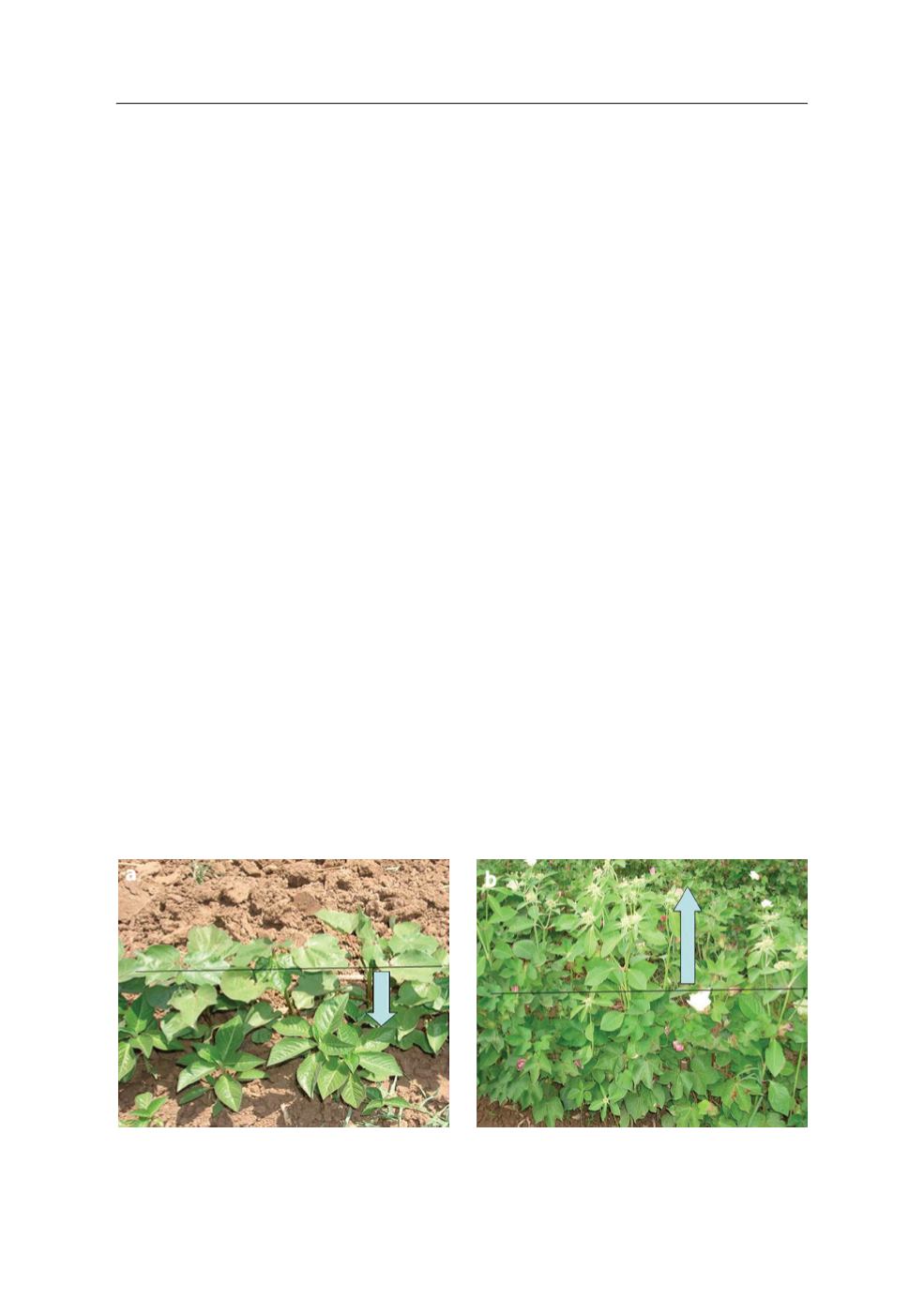
© Benaki Phytopathological Institute
Chachalis
30
minate and emerge from deeper soil, given
that light is poorly transmitted to the soil at
a depth more than 4 mm (Benvenuti, 1995).
The optimum temperatures for
E. heterophyl-
la
seed germination seems to coincide with
periods from late spring up to early autumn
in the Kopaida region as well as in the whole
country and therefore this species could be-
come a significant weed problem for many
spring crops in many lowland regions in the
country, including major crops such as cot-
ton, processing tomato and maize.
Growth measurements
Cotton (cv. Celia) was seeded on 26 April
2009 in Anthohori region; the seedbed was
prepared using a cultivator and later disked
for a proper seedbed. Basic pre-plant fertili-
zation (400 kg ha
-1
of NPK 11-15-15) and urea
(N 46-0-0, 80 kg ha
-1
at 5WAP) was applied,
according to standard agronomic practic-
es. Total irrigation was 6,360 mm ha
-1
based
on farmers’ empirical estimation. Cotton
seeds were sown (25 seeds per meter) and
final cotton population was approximately
180,000 plants ha
-1
. Emergence of
E. hetero-
phylla
was approximately 2 weeks behind
that of cotton, however soon afterwards
there was a flush of newly emerged seed-
lings that formed a very dense weed com-
munity (Figure 1c). Initial growth rate of the
weed was less than that of cotton until the
emergence of squares (65 DAP) (Figure 4). At
1
st
bloom (70 DAP), cotton and weed plants
had similar height (~58 cm), whereas after
that stage the weed plants were always tall-
er than cotton, reaching a maximum differ-
ence at the late ball stage (125 DAP), when
weed plants were approximately 40% taller
than cotton (Figure 4).
The above data indicate that fully grown
weed plants could exert very strong com-
petitive pressure on cotton. In addition, giv-
en the lower initial weed growth, it would
be important to study competition in cot-
ton cultivation systems with narrow or ul-
tra-narrow rows. In Greece, there has been
a renounced interest in such cropping sys-
tems mainly due to the significant positive
effect on irrigation water and competition
on weeds (Darawsheh
et al
., 2009).
Conclusion
In this study, the presence of
E. heterophylla
is recorded in tomato crop for the first time
in Greece. In addition,
E. heterophylla
is re-
ported as an emerging weed problem in
cotton and processed tomato crops in Ko-
paida region, Southern Greece. A basic de-
scription of
E. heterophylla
along with sever-
al images of the species were provided for
accurate identification in future recordings
in new areas.
Euphorbia heterophylla
was
shown to have a relatively short growth cy-
Figure 4.
Images illustrating the relative growth of cotton
vs
Euphorbia heterophylla
in field: a. At the stage of 4th cotton
node; b. At the stage of first balls. Arrows indicate the relative canopy height difference between cotton and weed plants.


